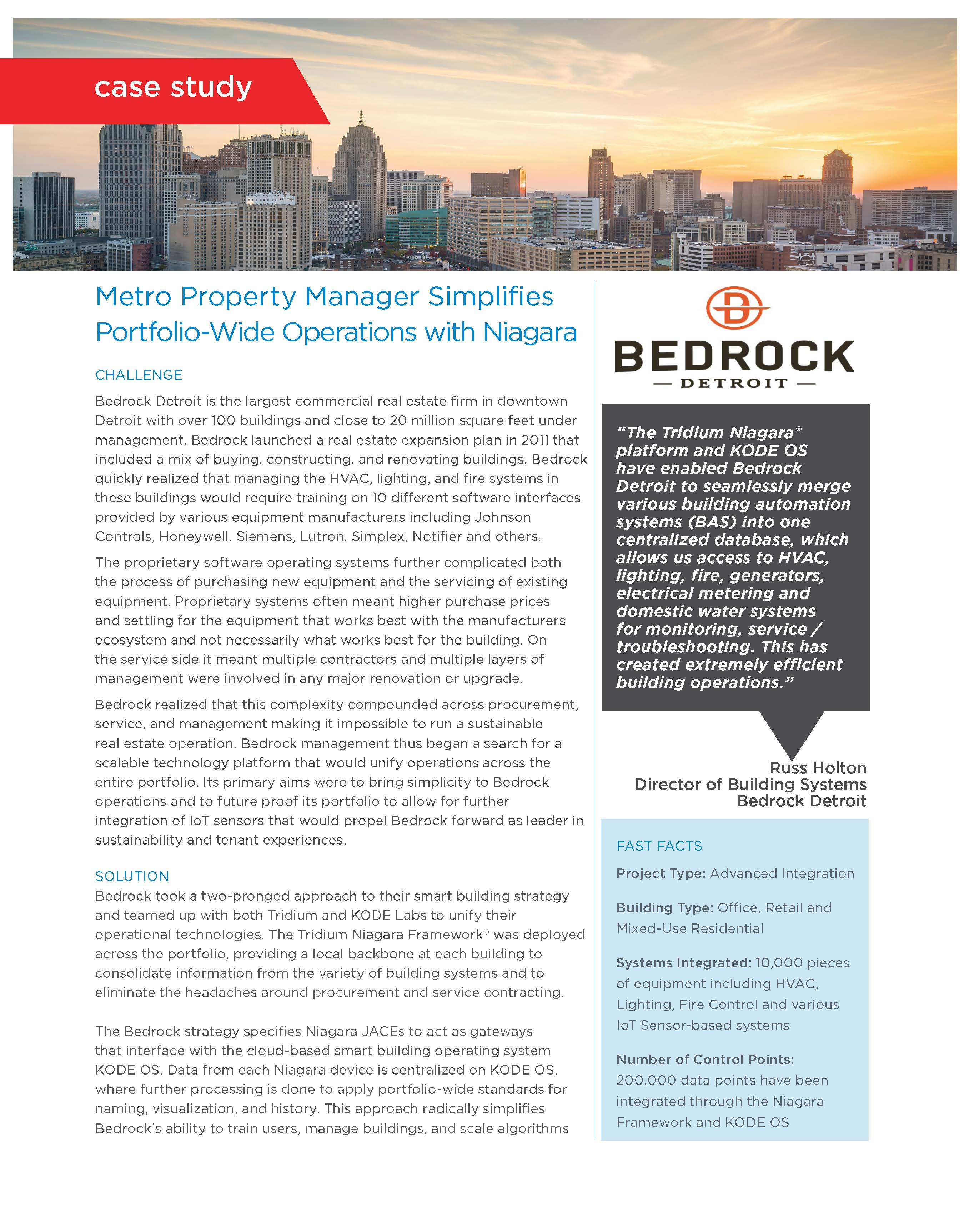Did you know that your internet is out of date?
Your browser is out of date, and may not be compatible with our website.
Just click on the icons to download a compatible browser.
By closing this window you acknowledge that your experience on this website may be degraded.
Breakthrough BMS Strategies Start with Niagara
Owners and facility managers have traditionally invested in building management systems (BMS) to increase comfort and save energy across their properties. Today, a BMS can also aggregate and deliver vital data about activities inside a building and about a building’s infrastructure. A BMS can drive an enterprise toward better business outcomes; that is, a better shopping experience in a retail space, a better learning experience in a school building, better patient care in a hospital or clinic setting, etc. For all these reasons, the right BMS choice is as important in the function of a small or medium size building as it is in a skyscraper. It is there to support the goals of the C-suite, operations staff, and occupants across the board. Any team that selects Niagara Framework as the BMS ‘Front-End’ to the network running their building, campus or business has set the stage for successful digitalization of both their building and business operations.
The core reason to install a BMS is to break-down operation silos across equipment and services like HVAC, lighting, access control, and utility monitoring. From one location, remote or local, a BMS optimally starts and stops equipment in a building based on occupancy creating an energy saving opportunity.
A BMS serves in Auto-Demand Response scenarios, whereby it automatically adjusts set points across equipment and subsystems when the signal comes through from the local utility to reduce Electrical Demand or to come fully back online. Likewise, BMS are designed to run the sophisticated algorithms that conduct fault detection & diagnostics (FDD) on packaged equipment – chillers, roof-top units, AHUs, generators, etc. – monitoring points and automatically adjusting control sequences based on real-time conditions. In this way, a BMS is instrumental in catching performance problems before a system fails. BMS plays the central role in another strong decades-old trend still gaining momentum – that of switching out simple on-off binary valves for analog variable air volume (VAV) boxes to achieve more precision control over air flow, greater plant efficiencies and energy savings.
In all these current use cases, facility managers rely on the BMS to run trends and reports and to program schedules, alarms and other simple data analytics. Facility managers preparing for the future have ambitions to soon incorporate machine-learning capabilities and AI into their analytics strategies. They are choosing Niagara because, in this respect, it is futureproof.
Niagara Framework is the transformative platform that disrupted proprietary-protocol building automation with its open-protocol approach over 20 years ago – and it is poised to disrupt again. It has achieved the position of defacto industry standard in BMS by supporting connectivity through the most popular existing and emerging protocols and ensuring compliance through rigorous standards-org and cyber security test procedures. Due to its open distribution model, Niagara software can be purchased from a large spectrum of different brand-name manufacturers, and it has the largest marketplace for drivers, applications, and graphics to make deployment easy and cost effective. Niagara Framework has the momentum to support its large customer base now and into the future. Read further to understand why Niagara Framework is your best choice in BMS.



